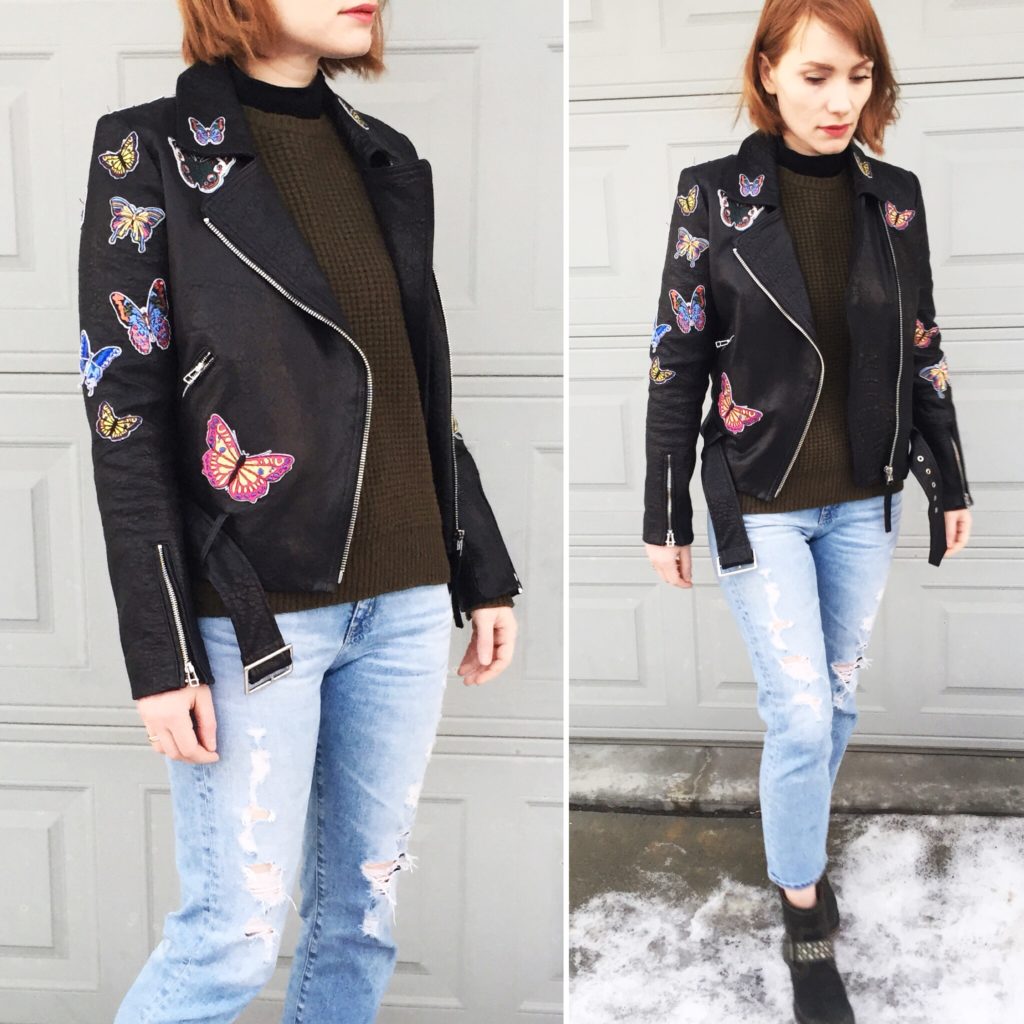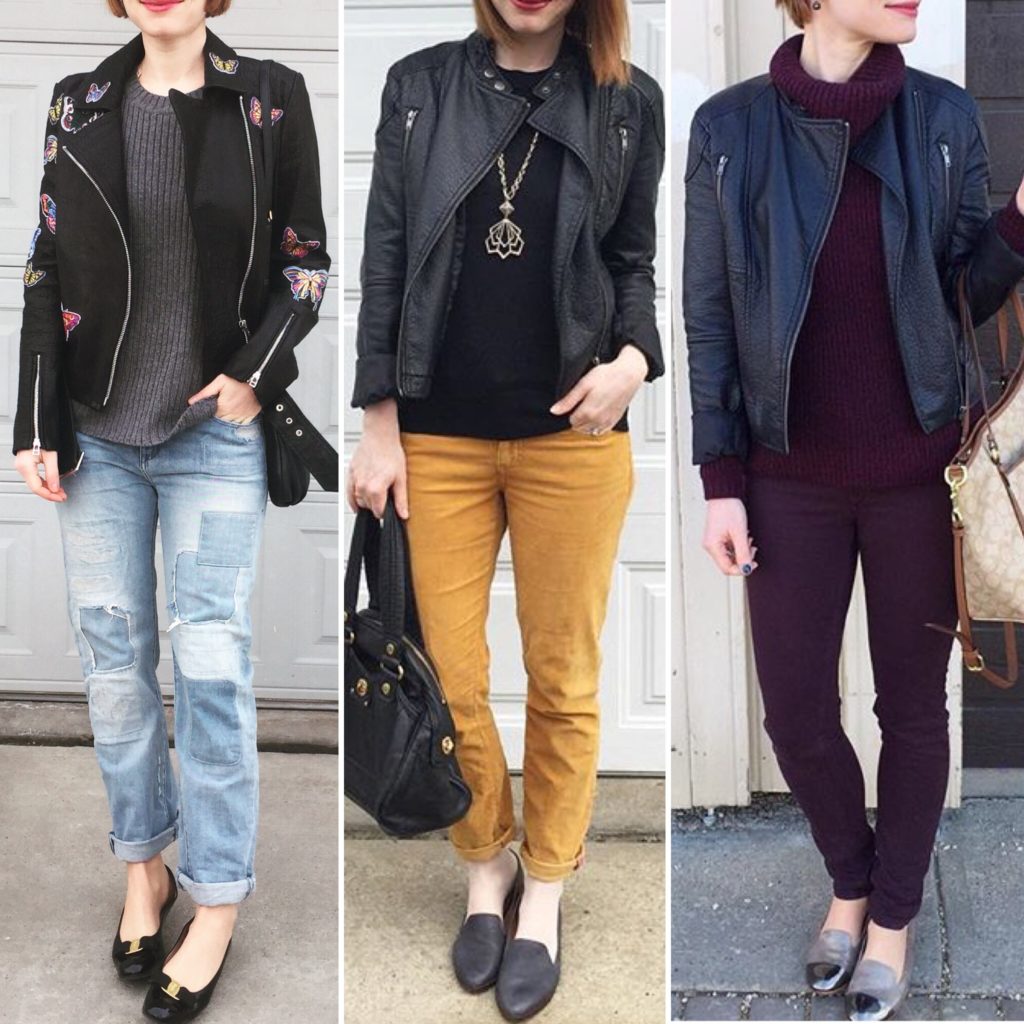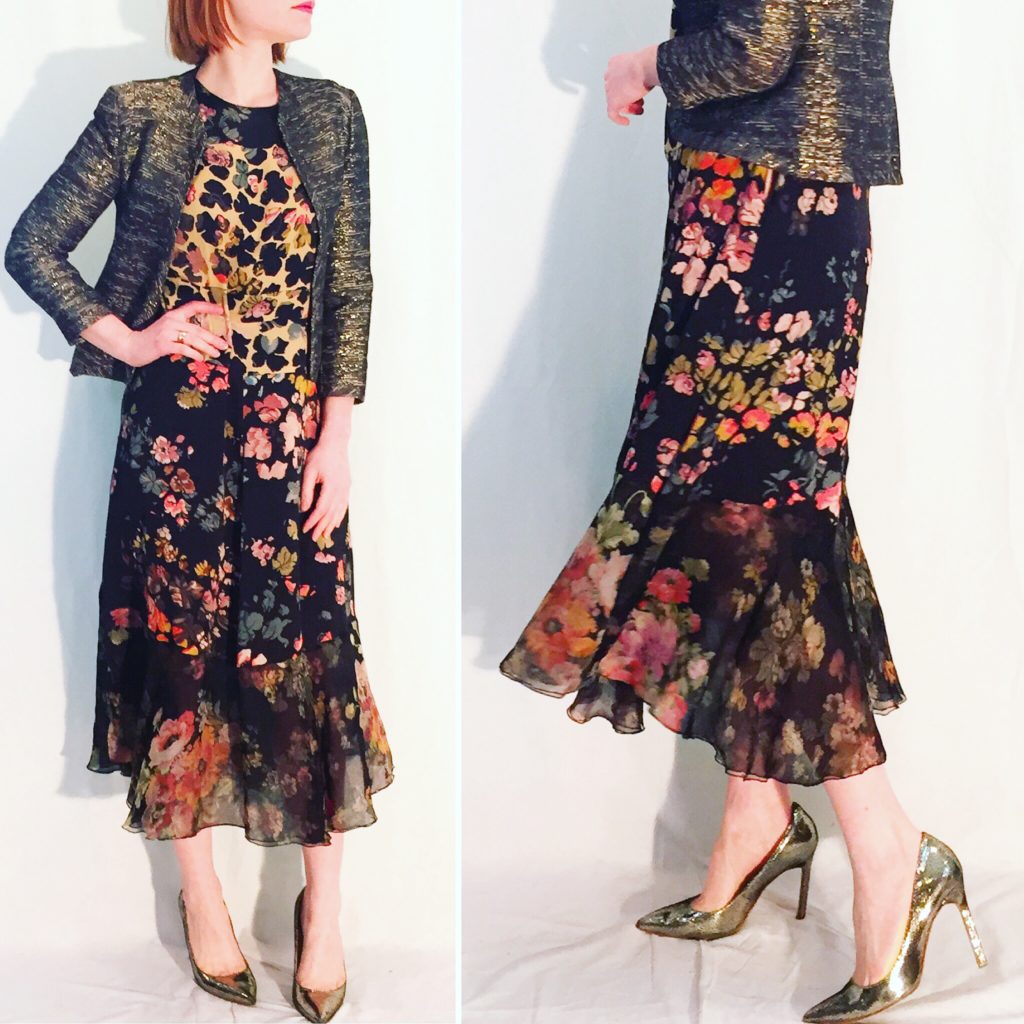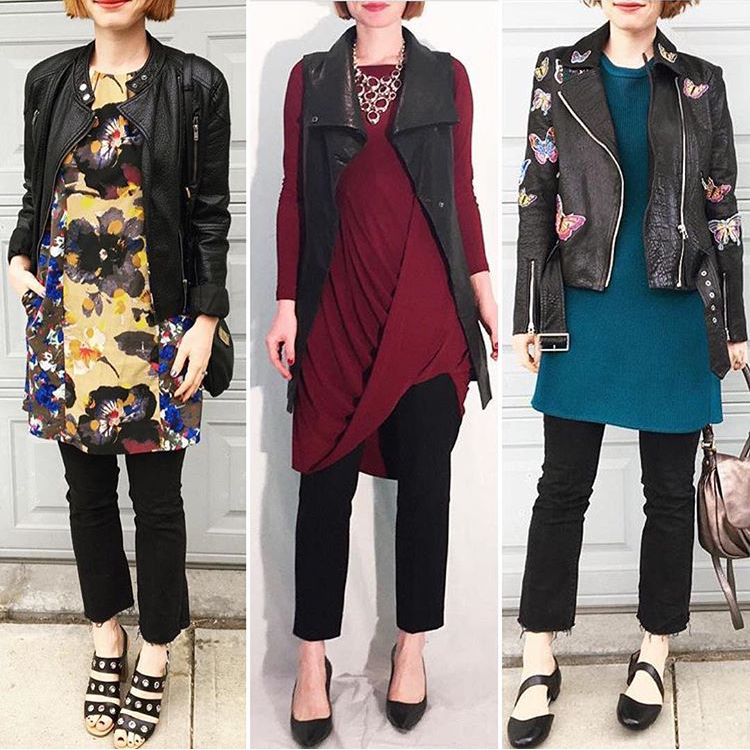Thrifting has had a big surge in popularity in the 5 years since I have, myself, gotten back into it. This makes me happy because it is, on the whole, a good thing for the environment. [It’s not, of course, a cure-all, much as banning plastic bags and straws cannot be. It’s equally annoying when people overstate the environmental impact of thrifting, as when they completely dismiss it.] However, with popularity, certain misconceptions have come into play. I see them espoused frequently online (e.g. Reddit’s Female Fashion Advice) and I wanted to address them because I don’t think they help The Cause: getting more people into thrifting.
Thrifting In a Rich Neighbourhood
The “thrift store in a rich neighbourhood” (full of luxury designer goods for $1, natch) is a phrase that gets thrown around so much on FFA that it should be its own drinking game. Now, in all fairness, there may be some truth to this – somewhere in the world, there may be a town with rich neighbourhoods with magical thrift stores overflowing with Chanel and Hermes. But that has not been my experience.
Thrifting is heavily location-specific, but in the sense that each town has its own thrift scene and you cannot generalize. I’ve done a fair bit of thrifting in places like Calgary, Red Deer and Vancouver, but I would not consider myself a thrift store expert anywhere except Edmonton, my home town. And that “expertise”, if you will, has taken years to develop. Telling someone who has never been thrifting before to find a thrift store in a rich neighbourhood is setting them up for frustration and likely failure.
Let’s talk a bit about Edmonton, because it will help illustrate my point. I often get comments on IG and the blog marveling at my thrift scores; I have myself pondered what makes Edmonton such a great place to thrift. I don’t have a definitive answer, but I have some theories.
First and foremost, I think it’s the right size. Our population (including the surrounding areas) is somewhere around 1 million, which make it large enough to sustain a diverse socio-economic cohort. Edmonton flies under a lot of people’s radar because of its reputation – in comparison with, say, Calgary, it’s considered a more blue-collar town. But it’s actually very diverse; there is a large student body (thanks to the University of Alberta, which is a well-ranked one in Canada), a large contingent of government workers, and (perhaps surprising to some) a not inconsiderable number of very wealthy people. The latter include both professionals – the U of A hospital attracts a lot of highly skilled surgeons and doctors, for example – and people with massive family wealth. Unlike perhaps in other places, these folks are VERY inconspicuous, at least for the average person. You occasionally see traces of them – you spot a Maserati casually parked on the street, for example – but for the most part, they’re not visible here in the same way as, say, Vancouver.
Second, with increased accessibility to online shopping for Canadians, any shortcomings in our local retail scene are becoming irrelevant. I routinely see lots of brands in thrift and consignment stores that are not locally available. In fact, I think online shopping directly contributes to the quality of our thrifting; based on the number of pieces I find new with tags, I think a good chunk of donations are the result of buying sale items, finding they don’t fit, and either missing the return window or not wanting to bother.
Lastly, there aren’t as many options for reselling locally (and making a decent buck) as there are in other places, particular the US. Selling on platforms like Kijiji or Facebook is a crapshoot, and it’s also highly label-dependent. (Lululemons are going to sell better than a more obscure high-end designer). There are a few consignment stores, but for the most part, you don’t make a ton of money back as a consignor; the return on designer clothes, in particular, is usually less than 20% (after accounting for the sale price and the store’s cut of the proceeds). Poshmark is still not available here (though it’s coming, I hear) and eBay can be a hassle. More importantly, shipping costs in Canada are ridiculously high, which puts a huge damper on online reselling.
So those are some of the reasons why I think Edmonton has a good thrift scene. You would have to consider how these factors might play out in your own geographic location, in addition to any other regional considerations that might impact people’s (retail) shopping habits (which, in turn, will largely dictate the thrift experience).
Now, about those mythical “thrift stores in rich neighbourhoods”. Edmonton is a patchwork of neighbourhoods, with “rich” ones sometimes directly adjacent to “sketchy” ones. My favourite thrift stores are often in commercial/industrial areas that are not in immediate proximity to any residential neighbourhoods. I know that my friend Jen (Life Preloved), for example, loves the Value Village by NAIT even though it’s, hands-down, the sketchiest store I’ve ever visited – it has its own security guard. Honestly, the only way to figure out which thrift stores are worthwhile is to visit them … and more than once. Then you can decide which you like best, which for me includes a consideration of how convenient they are to get to. Because as I said before, and will repeat ad nauseam, the more you can go, the better luck you’ll have.
The Time Commitment
There is no way of getting around this: thrifting is time-intensive, and don’t believe anyone who tells you otherwise. The caveat I will add on that is this: it also kinda depends on your expectations. If you judge thrifting success based on (a) finding super high end designer stuff, or (b) finding some really specific item, then yeah, thrifting requires a big time investment. The chances that you will walk into a store once every six months and find a pair of Manolo Blahniks or a Burberry coat are slim; it could happen, but it’s unlikely. Those things get donated, but obviously not in huge quantities, and thrift stores see a LOT of customers on any given day; their merchandise turns over way faster than a regular store. That means that things (especially nice ones) sell quickly, and also that new things come out on the floor constantly. Similarly, while selection is large, if you’re looking for something specific and are very picky, you may not find it on the first try.
On the other hand, I could probably walk anyone into any store at any time, and find a decent range of mall brands (think BR, Loft, J. Crew, American Eagle, Tommy Hilfiger, etc.) without much effort. It will still take time to sift through the racks – that much is unavoidable – but you don’t need to invest repeated visits over a long period of time.
Another caveat: it’s a slightly different story if you are plus size. It’s much harder to find designer pieces – in my opinion, largely because few higher end designers offer plus size options to begin with. So, in my experience, thrift selection for plus sizes reflects what the retail market has to offer – a lot of ugly muumuus, and some cute mall brands (Torrid, Lane Bryant, Modcloth, etc.).
The Cost
This is another know-your-scene situation. Small thrift stores tend to have the lowest prices but, at least in Edmonton, much less exciting selection (when it comes to clothes, anyway). My local Goodwills have standard pricing – typically under $10 per item – with a separate “boutique” section that is individually priced. Value Village is the worst when it comes to pricing, particularly since they’ve been bought out by Walmart, but also tend to get some of the best donations in town. Most dresses at VV, for example, are now $13 and up; many of the better known mall brands are over $20. For someone like me, who shops largely for designer stuff, these prices are still (mostly) acceptable. But you cannot expect to walk into a thrift store with $20 and come out with a bag of clothing. Sorry, Macklemore.
This brings up an interesting point that my BFF and I have often discussed which is that many of the larger chain thrift stores don’t really cater to the underprivileged, at least not as customers. When you can buy a cute dress at Old Navy for $15 or less on sale, why spend $20 on a used BR Factory dress at Value Village? [The quality is pretty much the same.]
Related to the above, I find online debate around the ethics of thrift shopping by non-low income people really baffling. It is an established fact that thrift stores, in general, receive way more donations than they can sell. This is most certainly true, in my experience, for stores in larger cities like Edmonton. [It may not apply in small towns, especially for thrift stores run by churches or small local non-profits.] Based on pricing, a lot of these stores are not catering to low-income customers; they’re in it to make money, whether for their parent corporation (ahem, VV) or for their actual charitable operations (Goodwill). They don’t care who buys their goods, and there are tons of goods to go around, including brand names along the entire spectrum.
Re-Selling
And since we are on this tangent, a few words on re-selling. I know a lot of people have qualms about arbitrage, and I get it. It can appear like a way of making money for nothing – buy a thing for $5 at the thrift store, flip for $100, ka-chingg! Here’s the truth: it’s a risky business that requires a lot of skill. Nobody, anywhere, is making money for nothing. That’s not how markets work. Resellers offer convenience for people who don’t want to spend time shopping for bargains; their end customer is paying a premium for the value of the time saved, and the discount obtained. But to deliver that, resellers need to know what clothes are worth buying (recognizing name brands, quality, popular trends), and what will sell. Not everything does, and certainly not for enough money to allow for any profit. They need to put in a lot of time: sourcing the goods and preparing them for sale (cleaning, photographing, listing, and that’s not including any time or costs associated with a storefront, for example). They also need to invest their own money in buying the inventory, and there is never a guarantee that it will all sell for a profit. [I find that non-business people often discount the opportunity cost associated with sinking cash into inventory. A thousand dollars in the bank has a different value than $1000 sitting in your basement in the form of used clothing.]
I follow a few big-time resellers on IG, so I know that it can definitely be a viable and lucrative business. Having done a bit of re-selling on the side, I can tell you that it’s not a particular easy way to make money … not a lot of it anyway. I can only assume that, to make a living out of it, you’d have to commit the same amount of time as any regular 9-5 job.
That’s it for now, but if you guys have any thrift-related questions – ask away in the comments!






